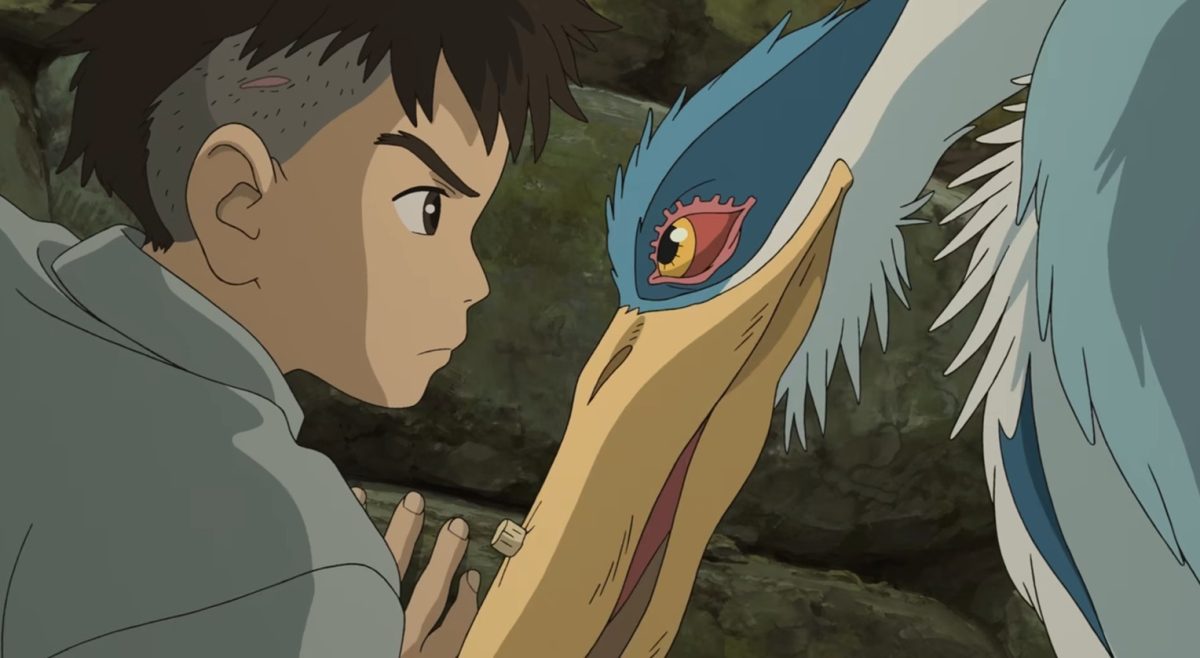It can be understandably hard to stomach why someone would possibly want to come out of retirement and return to their longtime job—that is, unless that someone is Hayao Miyazaki. The 83-year-old Japanese filmmaker is well-known in the industry for his vibrant animated works, filled to the brim with fantastical imagery as well as moments of sharp social commentary. However, Miyazaki is also renowned for being a serial liar about his retirement plans: Despite three separate retirement announcements in 1997, 2001 and 2013, following the releases of “Princess Mononoke,” the Academy Award-winning “Spirited Away” and “The Wind Rises,” respectively, he has returned to the art of filmmaking several times since.
It’s fair to say that many Studio Ghibli aficionados have happily learned not to take Miyazaki’s retirement plans too seriously, broken once again with the release of “The Boy And The Heron” in Japan back in July, before the film premiered in North American theaters on Dec. 8. Titled “How Do You Live?” in Miyazaki’s native Japanese, this latest work is loosely based on aspects of his own life and takes inspiration from a 1937 Japanese novel of the same name by Genzaburo Yoshino.
“The Boy and the Heron” is decked out with the elements that one comes to expect from a Ghibli production, such as vivid imagery of fantastical worlds and creatures and a lush orchestral score composed by longtime collaborator Joe Hisaishi. The film follows Mahito, a young boy whose ailing mother perishes after her hospital is destroyed in an Allied air raid, a sight that continues to plague him in his sleep. A few years later, he and his father move out of the city to his mother’s family’s estate, after his father remarries his wife’s sister, who is now expecting a child of her own.
Mahito struggles to acclimate to his new setting. He has difficulty accepting his future stepmother and tolerating his belligerent classmates, going as far as to inflict a wound on himself to skip school, all while hiding his disapproval of his circumstances for the sake of his father’s happiness. He finds himself drawn to an old tower erected by his great-uncle and is sucked into the portal housed inside by an ill-mannered grey heron. The heron taunts Mahito into believing his mother is alive in another realm and proposes to guide him, just as his new stepmother mysteriously disappears into the woods.
What follows is a grand lesson that seeks to answer the question posed by its original Japanese title: Do you live by doing everything you can to erase it, work towards processing and transforming it into something more meaningful or find a way to feel the happiness and freedom that is meant to be at the center of childhood until you’re ready to face the life still ahead of you? These themes are communicated through a lens of fantasy that appeals to people young and old alike, albeit in a more unwieldy manner in comparison to Ghibli films of old.
The cluttered nature of this other world hanging by a thread will likely lose viewers at first, but soon enough you realize this alternate world is actually a visual representation of Mahito’s emotional struggle. It takes patience to follow along as he comes to terms with the choices he makes and the world he struggles to love, and in some ways that’s similar to life for many of us. The spectacle he makes his way through is just that: a spectacle. It’s not a place to live when you already have a life you know and can’t let go of, no matter how much you feel the need to escape it; rather it is a place to come to terms with your own reality and process your true feelings. It’s a film that takes a watch or two to digest its peculiarity, and perhaps a bit of background before you dive in blindly. But don’t let that stop you from wanting to learn more about the Miyazaki method, whether that’s his storytelling or his animation style.
“The Boy And The Heron” as of now is still available in theaters in either Japanese with English subtitles or with English dubbing. Though best enjoyed and understood in its original language, don’t let that stop you from making it a double feature, if you can.



